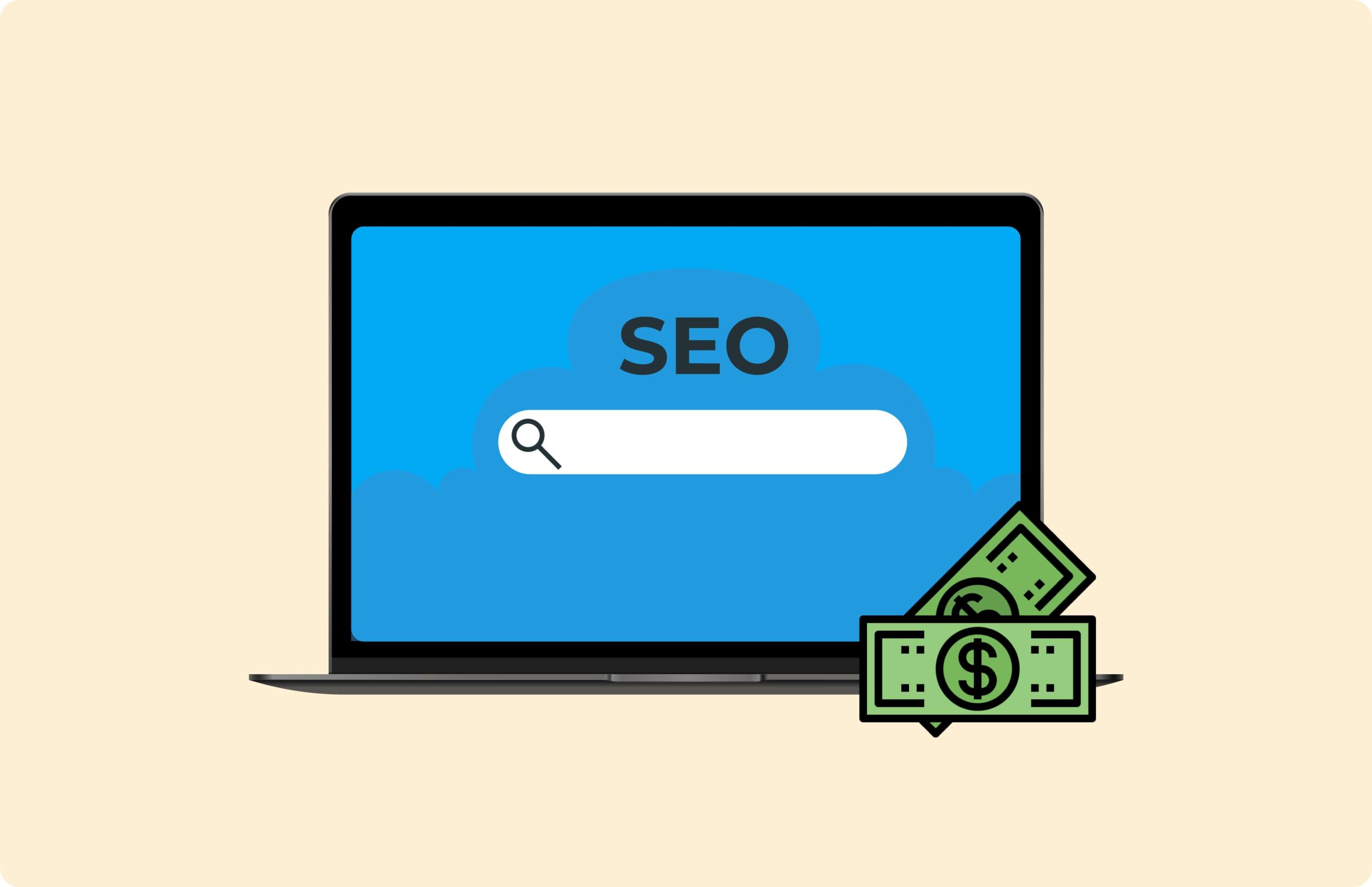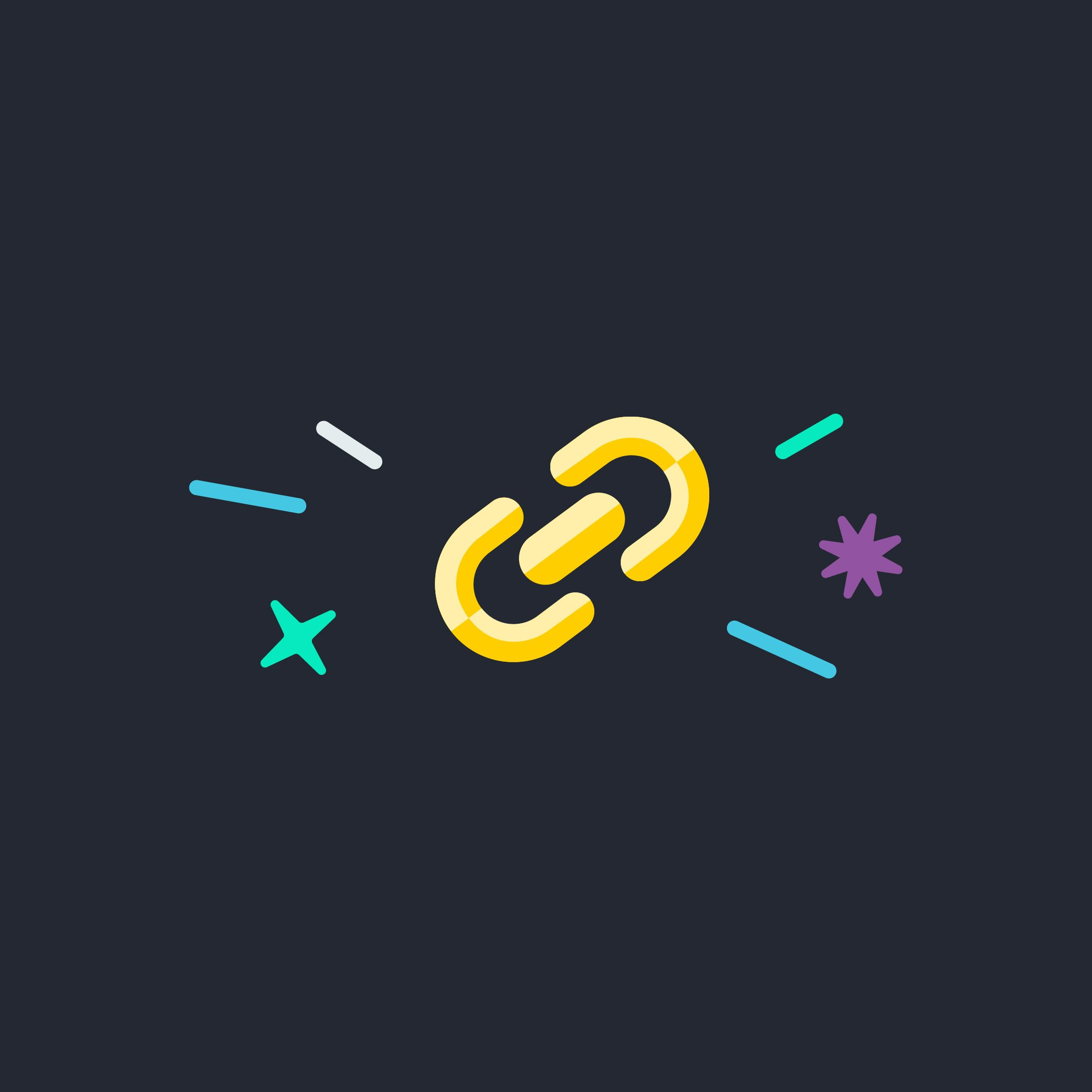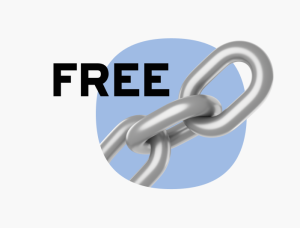Link Building for iGaming Niche: Promoting Gambling Sites
The iGaming industry continues to grow at an astounding pace. According to Statista, the global online gambling market reached over 100 billion dollars in 2024 and is projected to exceed 130 billion dollars by 2027. Such rapid development leads to one inevitable consequence — competition is becoming fierce. Every day, new casinos, betting platforms, and entertainment portals emerge, competing for player attention in Google and seeking new traffic sources.
What is the iGaming niche?
iGaming is a broad concept that encompasses any type of online game with the possibility of winning money: online casinos, sports betting, poker, bingo, lotteries, fantasy sports, etc. Gambling has a narrower meaning, focusing primarily on games of chance. In the SEO environment, they are often used as synonyms.
The largest and most developed iGaming markets are the so-called Tier-1 countries: Great Britain (one of the most regulated markets, with open advertising opportunities), Canada (active growth of provincial licensing, especially in Ontario), Germany and Sweden (markets with high competition and complex content and licensing requirements). But more and more people in the industry are noting the overcrowding of the region and moving to other GEOs. Among Tier-2 countries, Poland, Czech Republic, Hungary, Spain, Italy (markets with smaller budgets but good ROI potential) stand out, and from Tier-3 countries — Latin America, India, South Africa, Nigeria (developing markets where competition is lower, but there are challenges with solvency and regulation).
So, with the development of the industry, Google is becoming increasingly scrutinizing of the quality of the backlink profile of such sites. Due to restrictions on gambling advertising in many countries, organic traffic is the main channel for attracting users for many. And without a strong backlink profile — there are no chances in the top. Big brands invest hundreds of thousands in quality PR links, white hat campaigns, guest content, and building PBN networks. And this strategy works.
In the following sections, we will analyze how to adapt a link building strategy to the specifics of the iGaming market, avoid mistakes, and get real results in 2025.
The importance of link building for the iGaming niche
In the iGaming niche, link building is not just another SEO tool, but a key factor that directly affects the success of the project. Due to fierce competition and limited promotion channels, backlinks often become the main source of organic growth. And this is confirmed by practice: brands that invest in link building systematically receive stable growth in visibility, traffic, and profitability.
The average budget for link building in Tier-1 GEOs (such as Great Britain, Germany, or Canada) is about $8000 per month. Top brands easily spend many times more, creating powerful backlink profiles with tens of thousands of quality links. Without an appropriate budget, it’s almost impossible to enter the top, although there are certain strategies that can help do this with modest budgets.
Link building can be “white” — when links appear naturally in the context of relevant content, and “gray” or “black,” when purchased or manipulative links are used. In the gambling niche, there is often no choice: a completely “white” approach does not provide sufficient growth speed, especially in competitive markets. Therefore, most operators use mixed strategies — for example, combining PR campaigns with outreach guest posting and PBN.
In 2025, iGaming companies actively combine traditional, innovative, and gray methods of obtaining links:
- ⬤ Parasite SEO — placing content on high-trust third-party platforms (like Medium, Reddit, Forbes, Quora), which are quickly indexed and have good starting positions.
- ⬤ Programmatic SEO — automation of creating thousands of pages with optimized content for low-frequency keywords + their promotion through mass link building.
- ⬤ Tiered link building — building a multi-level network of links, where the second and third levels strengthen the main link, giving it more weight.
- ⬤ PR and White Hat methods — organic mentions in the media, guest publications, linkbait articles.
- ⬤ PBN and crowd — gray methods that, when used correctly, give a tangible push for new sites.
A separate problem is legal restrictions that operate in many countries. For example, in Germany, Australia, or the USA, gambling advertising is strictly regulated or completely prohibited. In some cases, even SEO promotion can be sanctioned if it is considered “hidden advertising.”
In addition, many media resources, blogs, and even crowd platforms simply do not want to work with gambling, fearing reputational risks, problems with AdSense, or bans from search engines. This significantly complicates the search for quality donors, and reliable options often cost several times more than for any other niche.
We should also mention the competition that is “pressing.” iGaming is one of the few niches where the cost of a single link can exceed $500-1000, and for large casino brands even $3000+. And this investment is completely justified — one top link from a relevant media in a Tier-1 country can bring thousands of transitions and hundreds of new registrations and conversions worth thousands of dollars. But for small sites or new players, reaching the profitable level of top operators becomes almost impossible if there is no clear plan and resources for link building.
Link building specifics by country
The global iGaming market is growing rapidly, but the dynamics of development vary significantly from region to region. According to the latest data, Europe maintains leadership with 53% of the global gambling market, followed by Asia and the Middle East, the USA has about 11%, and Oceania and Australia account for another 7%. While European countries show stable growth and fairly loyal regulation, some Asian and American regions create many barriers to promotion, forcing SEO specialists to look for non-standard approaches. Let’s consider the features of link building in the main GEOs that interest iGaming operators in 2025:
Great Britain (Tier 1)
One of the most attractive but also the most difficult markets. Getting into the top is almost impossible without investments of $10-20 thousand monthly just for links. The most effective strategies: outreach, PBN, guest PR, crowd. Top platforms — mostly closed or require high rates. A narrow niche and deep coverage of semantics are recommended.
Spain (Tier 2)
A fairly saturated market, but not as aggressive as Great Britain. Requires localized content and deep market knowledge. Gambling legislation is strict but understandable. PBN, native articles, and outreach through local media work. Link prices — from $80 to $250. To start, you need a budget of $5-10 thousand per month. Competition is high, but the market is open to quality projects.
Poland (Tier 2)
A good starting market with moderate competition and affordable rates. PBN, outreach, local directories, and forums — all of this works. Polish content is inexpensive, links — within $30-100. Budgets start from $2000/month. A good option for beginners and testing strategies before entering Tier 1.
Scandinavia (Tier 1) — Sweden, Norway, Denmark
Content and links are expensive, regulations change constantly, and promotion requires deep legal understanding. Guest content of high quality, native advertising, powerful PBN are in use. The price of one quality backlink — from $300. For entry, a desired budget of $20-30 thousand per month.
Portugal (Tier 2)
The market is open but not yet too competitive, making it attractive for entry. Legal gambling activity is regulated but not too strictly. Traffic is not very large, but the level of trust in local content is high. Effective methods — guest posts, local blogs, crowd. Link prices — $50-120. Budget from $2-5 thousand/month. Ideal for a niche product with adaptation to the local audience.
USA and Canada (Tier 1)
Great potential for traffic and revenue, but complex regulation (licenses are issued at the state level). The market is not yet fully saturated, but links are expensive: $100-500 per unit. Popular methods: outreach, Parasite SEO, use of authoritative media. Starting budget — $10-15 thousand per month.
Germany, Austria, Switzerland (Tier 1)
Competition is high, especially in Germany, but the potential is very attractive. Quality content in German, PBN, guest articles are in use. Link cost — $150-1000. The main difficulties — legislative restrictions, complex content topics. But with the right strategy, the market pays off well.
Romania (Tier 2)
An accessible and promising market. There is good traffic, average profit, and links are available. Minus — mandatory license for affiliates, without it the site can be blocked. PBN, crowd, outreach at the local level are often used. Link prices — $30-60.
Czech Republic (Tier 2)
A market with average competition and stable dynamics. A good option for a medium budget. Links are relatively cheap, competition is lower than in Western Europe. Almost all methods work — from PBN to Parasite SEO.
Italy (Tier 2)
A market in the formation stage, lots of traffic, but the tops are not yet stabilized. This creates a chance for newcomers ready for large investments. Content of average cost, links — $50-300. Guest PR, crowd, partner materials in the media work effectively.
Malta (Tier 3)
A country with very loyal iGaming legislation — many gambling companies and affiliates are located here. However, the volume of local traffic is small, so link building most often has a supporting function (for authority, not traffic). Links cost moderately — $50-150. Press releases, local news sites, niche directories are often used. Ideal as part of a multi-faceted strategy, not as the main market.
India (Tier 2/3)
A market with huge traffic potential but complex regulation. Laws vary from state to state, some prohibit online gambling completely. Because of this, Parasite SEO, redirects, proxies, and a light “gray” approach are common. Links are inexpensive ($20-70), many webmasters are open to cooperation. Content must be adapted for the English-speaking Indian audience. Risks are high, but the payoff with the right approach is also high.
Asia
Asia has great potential but with many barriers. In China, Western gambling platforms are prohibited, except for the state lottery. Proxy gambling and mirrors are often used. In Thailand and Japan, the market is partially open, but promotion requires deep local knowledge and content adaptation. Links are purchased mainly through intermediaries, often using Parasite SEO or cloaking.
Choosing a country is one of the most critical stages in planning an iGaming project promotion strategy. If your budget is limited — choose Romania, or test several GEOs with small budgets. For players with serious ambitions and resources — Great Britain, USA, or Spain. Don’t immediately invest large budgets in one GEO — sharpen your strategy gradually, adapt it if necessary, create local content, adapt semantics, and select the right different donors.
Current link building methods for iGaming sites
Depending on the GEO, budget, risks, and desired result, different methods of creating backlinks are applied. Let’s consider the main techniques used in 2025:
1. Crowd
It’s better to start with placing links on forums, in article comments, in profile communities, etc. This method is effective for expanding the link profile, raising trust, and diluting the anchor list. In iGaming, it is often used as an auxiliary tool in Tier-2/3 regions or to support other types of links.
2. Outreach
Contact with owners of relevant sites or blogs to publish a guest article with a link. The highest quality and “white” method, but difficult to implement in the gambling niche — many platforms do not accept gambling topics. Works best in Tier-1 countries, where trust in the site and content is important. These can be guest posts, listings, reviews, etc., which are simultaneously placed on different platforms. But this method is costly, as even one quality placement in the Western market can hit the budget.
3. Submits (directories, aggregators, social platforms)
Creating profiles or submitting the site to various directories. They give easy but weak links. Suitable for starting a profile, local SEO, or diluting “sharp” anchors.
4. PBN (Private Blog Networks)
Networks of own sites that are created or purchased for placing links. In iGaming — a very popular strategy, especially in regions with high competition (Great Britain, Germany, Scandinavia). They give powerful links, but require a competent technical approach and careful masking to avoid sanctions, and this is also one of the most expensive ways of link building.
5. Hacked Sites
A controversial but quite common method in the gambling niche. Its essence is placing links on sites that have been hacked. Usually, such resources already have a certain trust and history, which attracts SEO specialists. The advantages are obvious: minimal placement cost and quick accumulation of link mass, especially in competitive markets. Often used as a supplement to PBN or crowd when mass or quick “boost” is needed at launch. BUT it can have legal consequences and there is a high chance of losing all links in one night.
We do not recommend using this as the main strategy. It’s a tactical, not strategic move, which should be applied only with full awareness of the consequences. If the budget is limited — it’s better to combine crowd, submits, and Parasite SEO.
6. Parasite SEO
Creating content on authoritative platforms like Medium, LinkedIn, where the page is ranked in Google and leads traffic or links to your site. In gambling — an effective method for Tier-1/2 markets, where direct promotion is difficult. Often used to bypass prohibitions or restrictions on advertising.
In modern conditions, a successful link building strategy is not one method, but a combination of them. For example, PBN + outreach + Parasite SEO work great in Tier-1 countries. In Tier-2 — crowd + outreach + submits. In Tier-3 — you can start with crowd, submits, and Parasite. Not so long ago, we combine Parasite SEO + Programmatic SEO.
Implementation of all these tactics is possible in various ways:
- ⬤ through your own or external outreacher;
- ⬤ direct arrangements with site owners;
- ⬤ link exchanges (Whitepress, PRNEWS.io, Collaborator, Links-stream, etc.);
- ⬤ buying ready drops, domains with history, or renting other people’s sites.
Successful campaigns in iGaming almost always require a mix of “light” and “grayer” methods, as the rules of the game here are maximally competitive.
Free Web 2.0 sites database for iGaming
If you are promoting an iGaming site, we have prepared a materials that may be useful for you:
- ⬤ Database of Web 2.0 sites that can be used to promote iGaming projects.
You can get these materials for free — just write to us on Telegram @Linkyway_team with the message “iGaming Database”. We will send everything in response.
What you should know when promoting gambling sites to the West in 2025
Google is getting better at detecting manipulative links and site networks that work “for volume,” not “for quality.” Therefore, effective promotion of iGaming projects requires not just mass placement of links, but a detailed analysis of each donor. The main quality criteria for links in 2025:
- ⬤Domain Rating (DR) – an important guide to site authority. Choose sites with DR at least 20.
- ⬤Organic traffic – one of the key indicators: live traffic confirms that the site is in Google’s “white” lists.
- ⬤Follow/nofollow balance – oversaturation with nofollow links does not give the necessary SEO effect.
- ⬤Number of outgoing links to casinos – if there are too many, Google may consider the site a “link farm.”
- ⬤Marking materials as “sponsored” or “advertorial” – sometimes this can reduce the weight of the link, but also reduces the risk of sanctions.
- ⬤Design and UX – sites with a 2005 look raise suspicion and may be part of a network.
- ⬤Quality of content on the placement page – it’s important that the text makes sense, is not artificially generated or written “for show.”
- ⬤Presence of advertising pages (Media kit) – this often indicates transparent monetization, but also increases prices.
- ⬤Frequency of content updates on the site – “dead” sites rarely have weight in the eyes of search engines.
Google does not directly prohibit paid links, but severely punishes attempts to manipulate the search results. In the iGaming niche, this is especially critical, as sites with gambling topics often come into the focus of algorithm checks. Typical risks and how to prevent them:
Loss of links due to removal/deindexation → Check indexation, monitor link survival.
Poor quality or “dead” platforms → Work with verified databases, ask for traffic screenshots, check the site manually.
Inadequate pricing → Analyze the market, correlate DR/traffic/site profile with price.
Link profile imbalance (for example, only “online casino”) → Form a natural profile: mix anchors, diluted keywords, brand presentation.
Google sanctions (manual or algorithmic) → Use a combination of methods, create strategies with a focus on long-term results.
Step-by-step link building strategy for an iGaming site
Successful promotion of a gambling site begins with a clear plan: determining the budget, analyzing competitors, choosing strategies and donors. iGaming is one of the most difficult niches for building a link profile, so without a systematic approach — it’s impossible.
What to consider at the start:
- ⬤Budget — it determines which methods will be used: crowd, submits, outreach, or paid placements on top media or their combination and in what proportion.
- ⬤GEO — it’s worth choosing several GEOs that will be worked on, taking into account the local characteristics of the region.
- ⬤Types of platforms — it’s important to have a mix: from popular resources for crowd to authoritative niche resources that will bring real traffic and increase authority.
- ⬤Choice of methods — it’s better to combine several strategies to get a more “natural” link profile.
- ⬤Variety of niches — gambling companies actively place on sites of various topics — finance, sports, technology, health, etc. This allows creating a “wide” profile and minimizing filter risks.
- ⬤Anchor strategy — most large gambling brands use an aggressive approach to anchor lists — repeating keywords like “online casino”, “sports betting”, etc., often ignoring naturalness. But in a highly competitive niche, such aggressive tactics often bring results faster than cautious ones.
In 2025, SEO for the gambling niche is a complex survival game. Competition is fierce, Google is scrutinizing, and budgets are cosmic. Without a clear strategy, link building turns into an unsystematic waste of money. That’s why the correct sequence of actions is not just a “plan,” but the foundation for visibility in search.
It all starts with detailed analysis. We look at what competitors are doing, how they build their profile, on which platforms they place, which anchors they use. This gives an understanding of which direction to move, how many links are needed, and of what quality.
Next — budget. Without this, it’s impossible. In gambling, it’s almost always six-figure (in dollars), but the main thing is not just to spend, but to wisely distribute funds and choose a strategy, then you can get significant feedback in the form of traffic and conversions even with small investments. Part of the money always goes to the “foundation” — quality placements that carry weight and reputation. Part — to auxiliary links that provide a “living” appearance of the profile (forum, Web 2.0, crowd, Q&A). And we always leave a reserve — for maintaining links or emergency replacement of losses.
When everything is OK with analytics and budget — we move on to choosing platforms. It’s important not to focus on one topic. A good profile is diversity. Casino links on a sports portal? Great. Interview with CEO on business media? Perfect. Link in an article about crypto? Spot on. It’s important that everything looks logical, even if the topic is not quite “gambling.”
A big question — anchors. Many simply drain the budget here. Often iGaming brands hammer with the same exact match anchor — “best online casino UK,” “top slots site” and so on. Young projects often focus on diversity. Somewhere brand, somewhere URL, somewhere article title, and pointwise — commercial anchors. The main thing is not to create a pattern that Google will catch in two weeks.
A separate topic — links from main pages (homepages). They give weight. Quickly. But they also “burn” no less quickly. Often these are rental links, and if you stop paying — everything disappears. In addition, these are most often spam platforms with 50+ outgoing links. We use such links very carefully: only if the donor is verified, and only if it’s part of the overall strategy.
Another important part — PR communication. Many ignore it, thinking it’s “expensive and futile.” But one material in a large Western media can replace dozens of average links. Besides, it raises the level of trust and helps build the brand. This is especially important for new casinos that don’t have a history yet.
All this is held by constant monitoring. Every week, you need to check the status of each link: whether it hasn’t flown off, whether the link hasn’t changed, whether the donor hasn’t turned into garbage. This is routine, but critically important work, because in iGaming you can lose authority in a day, and restore it — in months.
Conclusions
All this looks complicated, time-consuming, and requires experience. But for us — it’s a regular process.
We at Linkyway know how to promote iGaming projects to Tier-1 markets, where the price of a mistake is very high. We know how to:
- ⬤Form effective anchor strategies
- ⬤Work with risky formats without harming reputation
- ⬤Balance “white” and “gray” promotion methods
Just write to us — and we will close the link building question for you.





